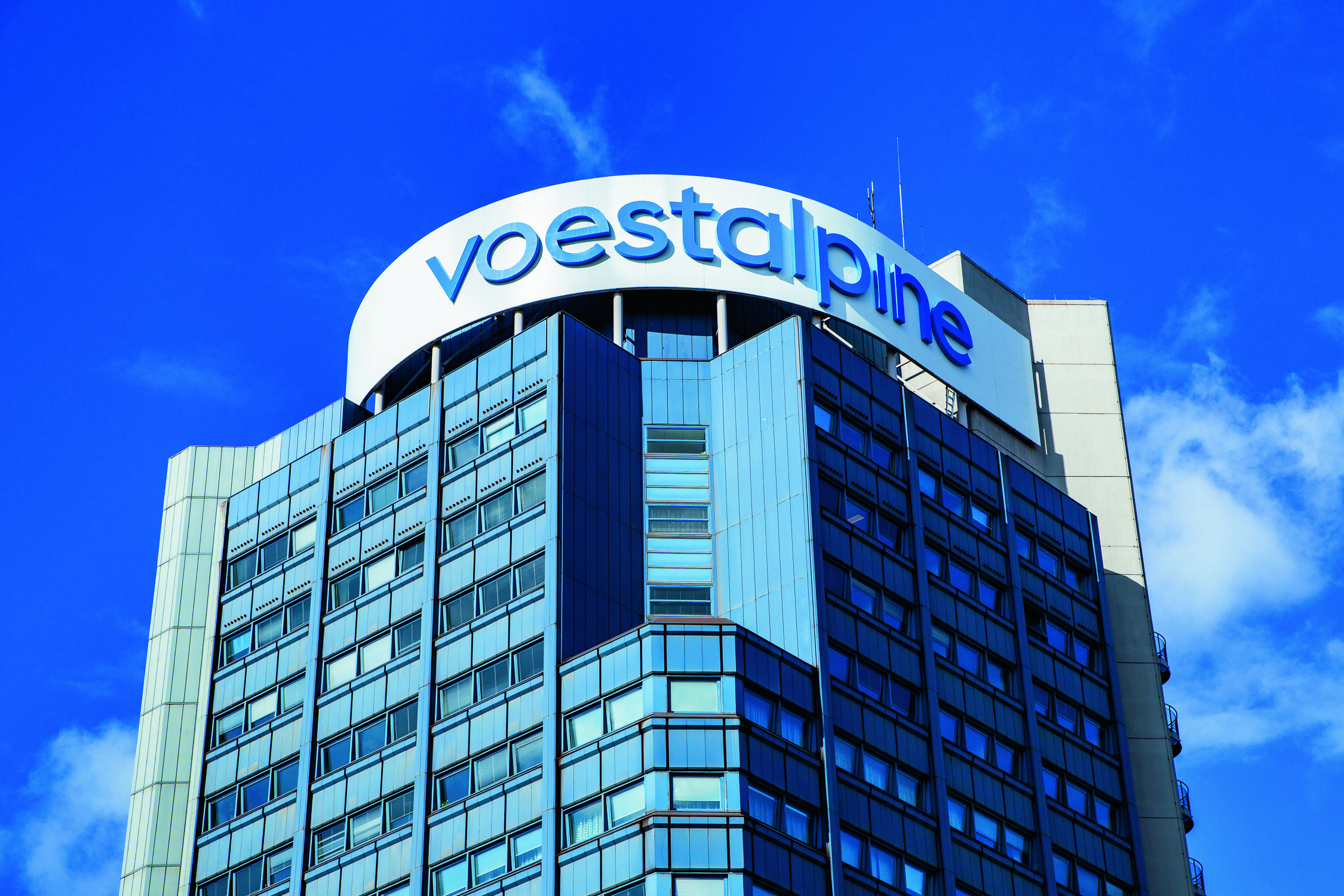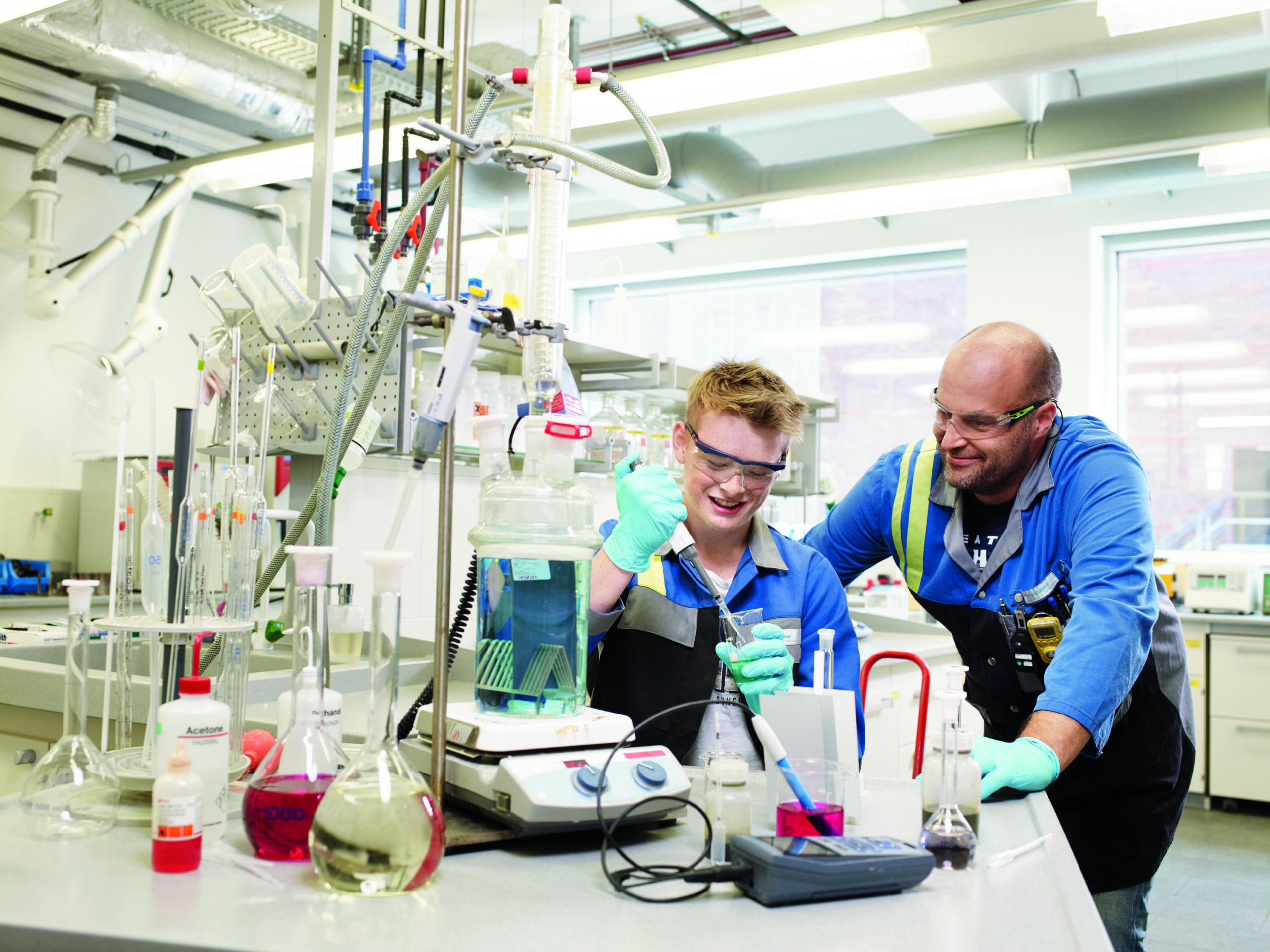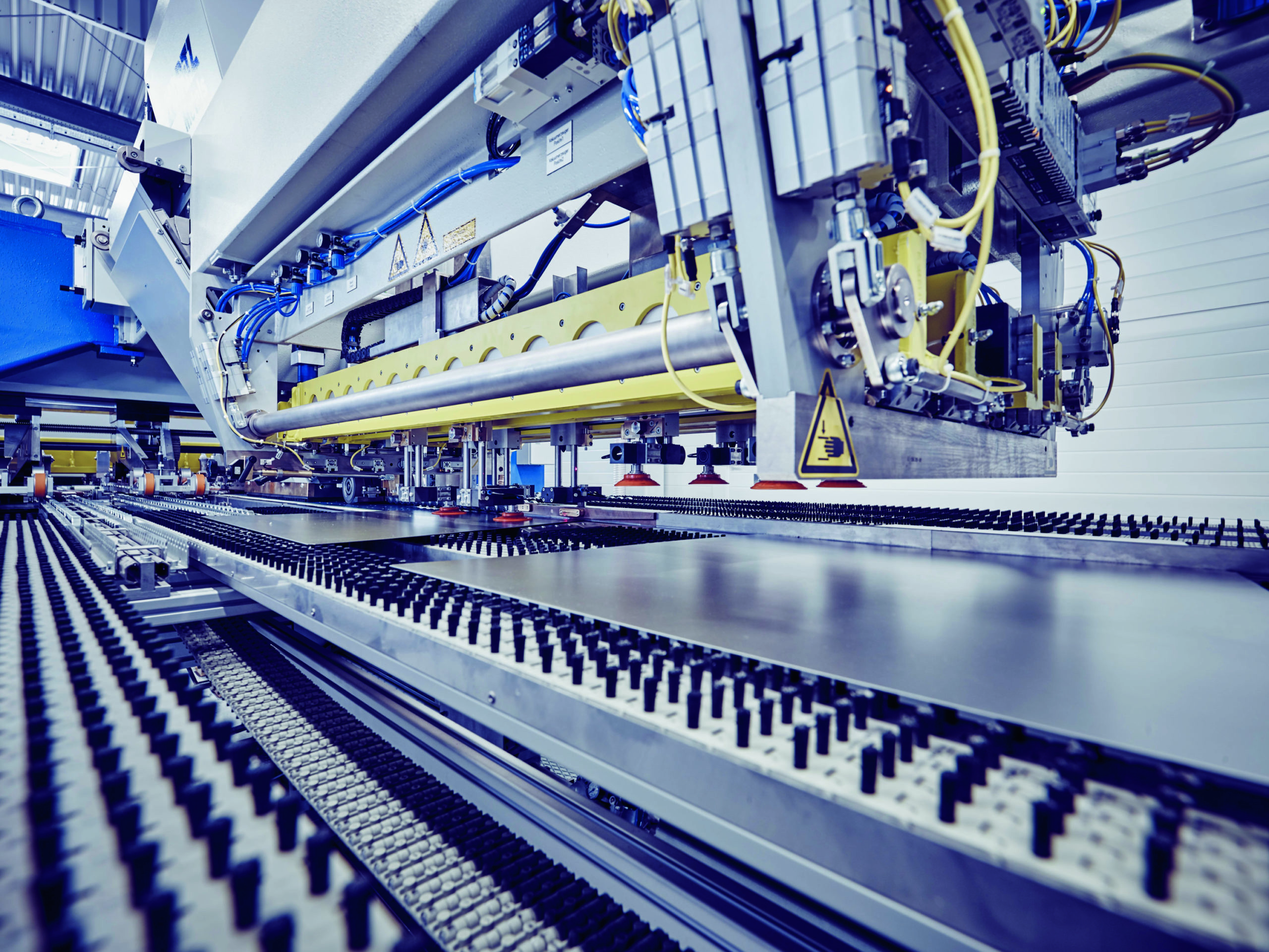voestalpine AG
Specialization
Voestalpine, a global steel company, makes steel and steel-based products, including automotive parts, tubes and rails. It has more than 51,000 employees worldwide, of whom more than 23,000 work in its 24 Austrian companies.
In 1999 the employees’ average age was 41 years, with an average age of 47.5 years among high and middle management. In the Austrian companies 80% of the 13,000 male employees are production workers who do night-shift work.
After World War II the steel company was state owned and had up to 70,000 employees. An economic crisis in the 1970s prompted the government to reorganise the company and privatise most of the shares. Technological reorganisation reduced the staff to 8,000 employees in Austria. The new management’s leitmotiv was, ‘Not more steel, but more out of steel!’. Its streamlining strategy helped Voestalpine become a successful international company with 28 subsidiaries and 22,000 employees that made a record profit in 2004.

The main reasons for this success are a highly experienced and skilled workforce, excellent management and a structured social dialogue with the works council. The human resources (HR) policy is based on management’s determination to serve shareholders, clients and employees. This threefold focus led to employees having a 10.1% stake in the company and to excellent preventive-health and social policies.
On the other side, 20 years of downsizing by early retirement and low recruitment led to an employee age profile that was mainly middle-aged, and keeping older workers and generation diversity were not seen as important.
Expected results
Downsizing, a halt on recruitment and early retirement resulted in a high average age. Analysis revealed that this carried strategic risks for productivity, including rapid skills loss, workplace frictions and problems attracting new employees. The original health initiative for older workers was changed into a strategic reorganisation programme.
In 2001 the board of directors approved a programme designed ‘to achieve best personal output by best personal development in every generation, men and women, from joining the company to official retirement;’ and to create an ‘attractive working world Voestalpine.’ The programme, known as LIFE (for Light-hearted, Innovative, Fit, Efficient), has as its objectives:
- keeping older employees at work;
- sustainable integration of new employees;
- knowledge transfer between generations;
- ergonomic rationalisation of risky and unattractive tasks.
A second phase, aimed to implement the programme in Voestalpine’s Austrian companies in order to transfer it subsequently to its international companies, included:
- development of an HR strategy;
- a measure called Formula 33 that grants every employee at least 33 hours a year for projects and training in, near or off the job.
- corporate culture and leadership;
- personnel management;
- recruiting;
- occupational health and safety;
- working times;
- processes and ergonomics;
- integration management;
- equality – assessment and measures for equal opportunities among women and men.
Age management dimensions
(measures taken)
Employment exit and the transition to retirement
- preparatory measures for retirement at the corporate level;
- flexible forms of transition;
- flexible forms of retirement that allow for a phased reduction of working hours.
Comprehensive approaches
- an emphasis on preventing age management problems;
- a focus on the entire working life and all age groups, not just older workers;
- a holistic approach that encompasses all dimensions of age management;
Health protection and promotion, and workplace design
- ergonomic workplace (re)design;
- health-promoting working time arrangements
Redeployment
Learning, training and lifelong learning
- organising work so that it is conducive to learning and development – for instance, within the framework of mixed-age teams and groups;
Job recruitment
- programmes for wage subsidies or settling-in grants;
- waiving age limits in job advertisements to encourage greater age diversity
Main motives for the decision to implement the age management measures
The realization that downsizing, the recruitment freeze and frequent early retirements led to an excessively high average age. The results of the corresponding analysis indicate that this behavior created strategic risks for productivity. Coupled with a rapid loss of professional skills, personal problems in the workplace and difficulties in recruiting new employees because the job did not seem attractive enough.
Our way towards the age management
Today the LIFE programme is part of Voestalpine strategy and the board of directors has responsibility for HR. The new CEO promotes LIFE as the ‘most important HR programme.’
In 2005, Voestalpine’s steel, rail systems and profiles divisions began to implement the LIFE programme including the LIFE toolbox measures. Steering groups at divisional level promote the programme and managers are given the objective of implementing it.
In April 2005 HR began to implement LIFE in Voestalpine’s automotive division and its international companies such as Polynorm in the Netherlands. The works council is active in LIFE and promotes the programme internationally. The LIFE toolbox has almost 100 projects in all eight HR fields, of which shift reform in the steel division is an example.
Night work is more exhausting than day work, especially for workers aged 45 years and over, who find that it causes sleep disorders, morbidity and chronic stress. The steel division’s coking factory, which has night and shift work, developed a plan to reform shift work which was implemented as a pilot project in 2005. The new shift plan offers age-adjusted schedules with options to reduce working time and night work.
The coking factory shift reform was part of the LIFE toolbox. Worker seminars about ageing, health and shift planning were followed up with questions about shift preferences, which employees and superiors incorporated into a new schedule. The new roster has three options for weekly hours: 34.4, 36 and 38.5. Each worker can choose a weekly working time.
A similar shift reform was implemented in another factory. In all cases, workers aged between 20 and 30 years were most in favour of reducing working time, even with salary reductions of up to 5%. The shift pilot involves around 800 employees in seven departments.
More employees are using the LIFE toolbox to improve their skills and more supervisors are using it to improve productivity. The following is a summary of the toolbox measures, across the eight HR fields:
- managers are educated in topics like ability to work, ageing and managing diversity;
- recognition and involvement of older workers are reinforced
- prevention of age and gender discrimination is on the agenda;
- a specific HR processes is designed for each generation profile;
- long-term employee and education planning increased worker efficiency;
- trainers learn instruction methods and behaviour that do not discriminate on the basis of age;
- older workers are trained as mentors, teachers or trainers;
- in many workplaces ergonomic initiatives reduce stress and strain;
- new production units are planned to be LIFE-conforming;
- occupational health and safety measures focus on ability to work and age profiling in health examinations;
- many health, safety and stress management programmes started;
- mentors for better integration and internal training were established;
- first female trainees were recruited for the steel mill;
- recruiting campaigns started at schools and high schools.
Strengths and weaknesses of the chosen approaches
Strengths
The effects of the LIFE process are:
- significant increase in workers’ satisfaction index – up from previous 74% to 89% in 2004;
- large increase in job applications;
- higher attractiveness index in the labour market;
- positive impact of LIFE on post-merger processes in international companies;
- partnerships with clients deepened;
- banks improved credit rating because of investment in sustainable workforce;
- JP Morgan upgraded the stock because of LIFE.
Weaknesses
The greatest problem in implementing the program was reconciling workers’ expectations with the slow pace of developing, discussing and implementing the LIFE measures. After two decades of downsizing, neither managers nor workers’ representatives could easily cope with a 180-degree turn in HR policy.

Activities to sustain this initiative
An appreciative corporate culture has been created in which trust, diversity, self-determination and the assumption of responsibility are called for and promoted. The voestalpine culture is constantly being developed in this sense as a sign of a group-wide identity.
Diversity
We value the individuality of all our employees and their abilities, regardless of gender, age, origin, religion, sexual orientation or possible impairment, and create the conditions for equal opportunities, health-preserving and life-phase-oriented work.
Education and training
Voestalpine employees are supported by targeted measures in their qualifications and thus their professional development opportunities are expanded. In addition, we see the training of young people as well as lifelong learning as a lasting factor in the success of the company.
Sustainability is an essential principle of all decisions and actions in voestalpine. The basis for this is laid down in the Corporate Responsibility (CR) strategy. It is an integral part of the Group strategy and derives directly from functional strategies. In addition, various internal and external influencing factors had to be taken into account in the CR strategy, such as concerns of employees and customers, environmental issues, products and innovations, and the claim to make the supply chain transparent.
A separate department on “Health & Safety” has been created and is directly attached to the company’s board of directors.
Employee talk
The employee interview has established itself as a central instrument for personnel development in many voestalpine companies. A structured, annual dialogue between supervisors and employees away from everyday work forms the basis for a positive cooperation. The main differences from other conversations are careful preparation, regularity and documentation.
Company-wide, employee discussions with employees are mandatory. The introduction of appropriate tools for workers (e.g. in the form of team evaluation dialogues) is recommended but not included in the mandatory standards. Standardized questionnaires and guides are offered centrally, but social and country-specific adjustments are still possible. In the 2019/20 financial year, 29,121 employee interviews were conducted throughout the group.
The “Aha!” moment
Management must create structures and ensure that ideas can be drafted, told, and carried on without being pre-judged or shot down. Management needs to live up to this mindset. And you also have to give people the time to come up with ideas. These are elements that are important, without them any transformation is doomed to failure.
Monitoring system of the effects
Increasing attractiveness as an employer through employee survey
Since the introduction of the LIFE programme at the beginning of the 2000s, voestalpine has been conducting a group-wide employee survey at regular intervals. The most recent survey took place in autumn 2019 and was conducted exclusively online for the first time. 77% of all invited employees have given feedback. The results show positive developments at Group level. The “commitment value” increased by 3% to 56% compared to 2016. This central metric describes the emotional and intellectual degree of attachment of a group or organization and is calculated from the answers to various questions.
Approval levels also rose in the categories of “professional development opportunities” and “direct leadership” on which the focus was placed. In addition to the Group-wide employee survey, companies will have the opportunity to conduct interim surveys (“Pulse Surveys”) in the future. These give them more autonomy and flexibility in evaluation. In order to implement the measures developed on the basis of the survey results consistently and comprehensibly, the Management Board of voestalpine AG has decided to introduce appropriate reports to the supervisory bodies of the companies.
Employer Branding
Positioning as an attractive employer is of great importance to voestalpine. Only with committed and professionally competent employees can voestalpine drive innovation and successfully assert itself on the market.
The regular voestalpine employee survey is the “barometer” for employee satisfaction and results in the development of internal measures. Numerous activities in personnel marketing are also being set externally in order to strengthen the employer brand voestalpine, such as cooperations with (especially strong presence on all relevant online and social media channels as well as active reporting from the company increase the visibility of voestalpine among the target groups.
Additionally annual reports are given to show the monitoring.
Beneficial effects of the measures
The following are the benefits of the LIFE programme in a broader context:
- Voestalpine’s innovative image make it more attractive to clients;
- LIFE also became a media campaign in television, journals and newspapers. The financial value of this campaign was estimated at more than €2 million;
- many invitations to management conferences and trade union congresses;
- the programme won several awards, including financial awards;
- the conservative government and the trade unions referred to the LIFE model in their economic and pension policies.
Our recommendation
Nowadays, companies are permanently faced with new developments and challenges in the personnel sector. They have to create incentives, motivate, and react promptly. They have to take employees’ worries seriously, including the recurring question of the consequences digitalization will have on the future of the workplace—“my workplace.” In a fair and open working relationship it should be clear, however, that demands are also made of the employees as a means of ensuring effective cooperation over the long term, because where something is being offered, it is not presumptuous to expect commitment, quality, flexibility, and the will to succeed in return.
However you view it, in the end the more the interests of the employee overlap with those of the company, the greater their shared future success.
“A winner mentality means delighting in success. We are involved in an international competition, and competitions are things you want to win. And I think that for us this means bringing the best innovations, having the most efficient processes, taking a solution-oriented approach to customers, and quickly adapting to new challenges. Our employees are well trained, motivated, and pulling in the right direction.”
Herbert Eibensteiner, CEO voestalpine AG

Based on:
– the company web-page;
– European Foundation for the Improvement of Living and Working Conditions, Voestalpine Austria: a comprehensive approach.
Description of pictures included:
- Headquarter Linz by Night, 2. voestalpine Stahlwelt inside, 3. voestalpine Automotive Components Linz, 4. voestalpine apprentices
